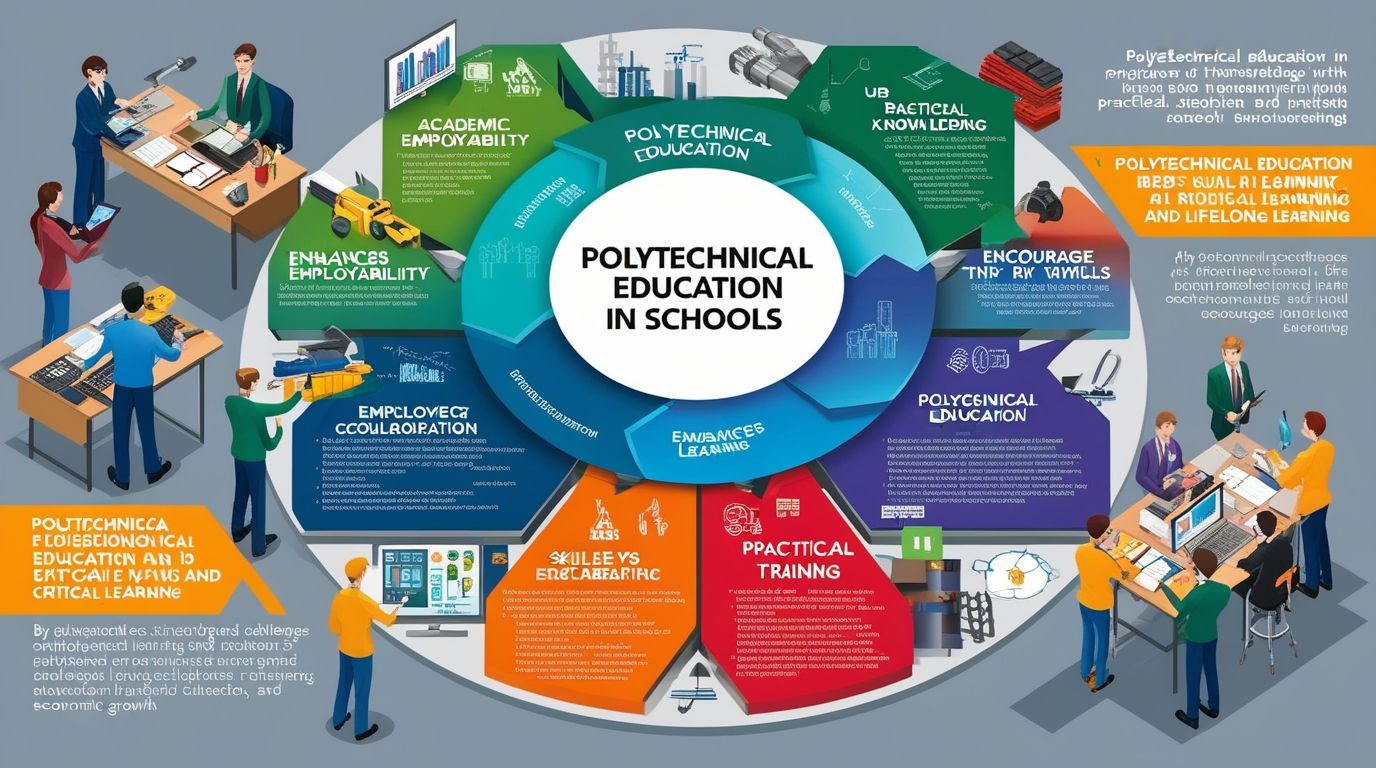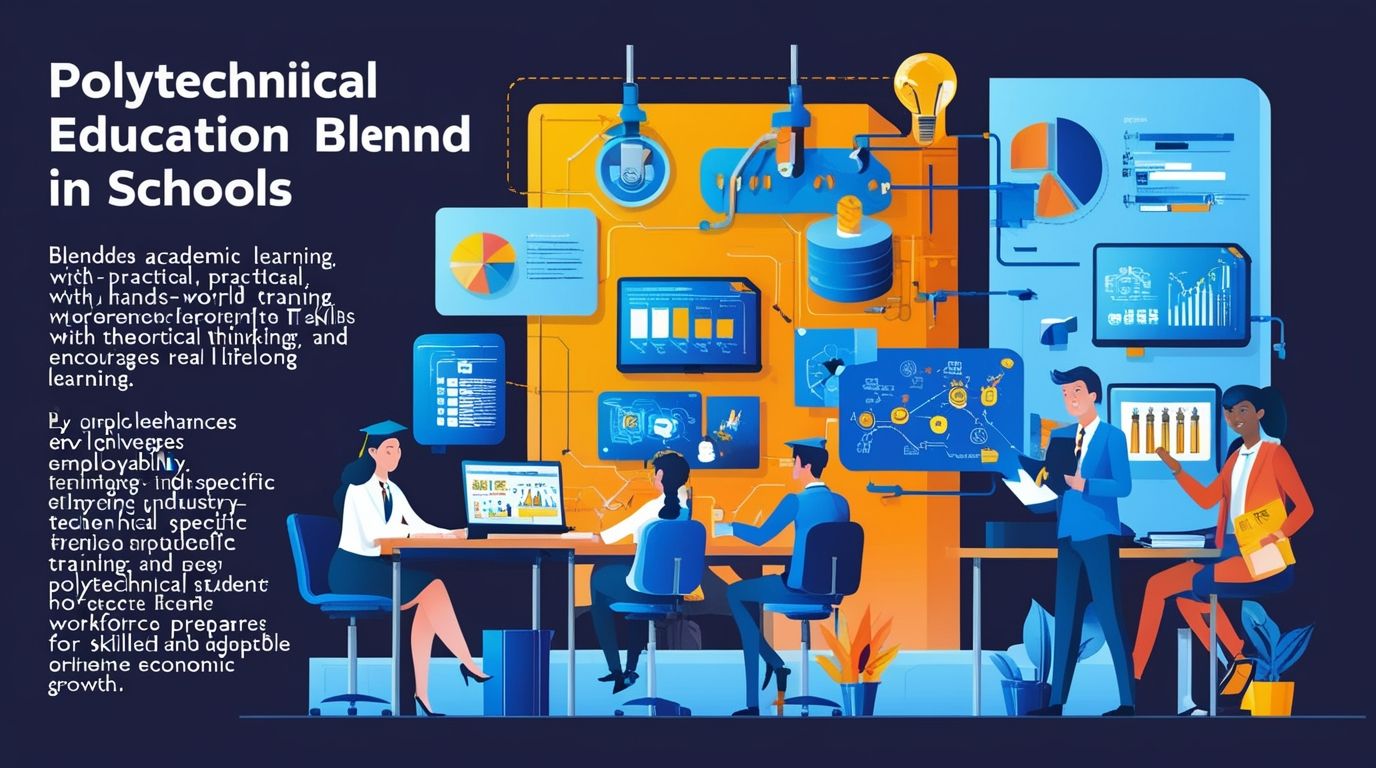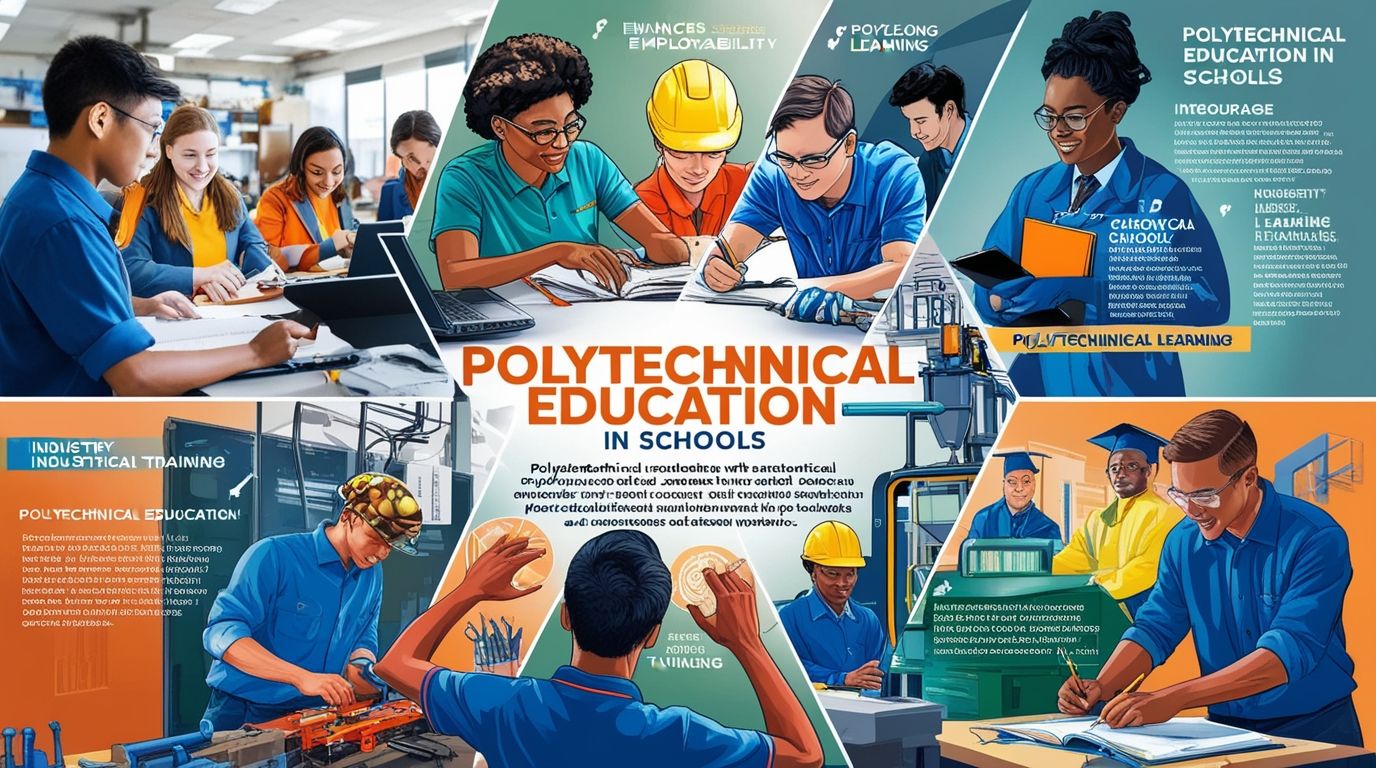Polytechnical Education in Schools: Bridging the Gap Between Theory and Practice
Polytechnical Education in Schools, emphasizing practical skills and applied sciences alongside traditional academic learning, plays a pivotal role in preparing students for the demands of the modern workforce. This educational approach integrates theoretical knowledge with hands-on experience, fostering a comprehensive understanding of various technical and vocational fields. In this article, we explore the significance, benefits, challenges, and implementation strategies of polytechnical education in schools.
The Significance of Polytechnical Education
In today’s rapidly evolving world, the traditional education system, with its heavy focus on theoretical knowledge, often falls short in equipping students with the practical skills required in real-world scenarios. Polytechnical education addresses this gap by blending academic learning with technical and vocational training. This holistic approach ensures that students not only grasp theoretical concepts but also learn how to apply them in practical settings.
Polytechnical education is significant for several reasons:
- Workforce Readiness: It prepares students for various career paths by providing them with the skills and knowledge necessary for specific industries.
- Economic Growth: By creating a skilled workforce, polytechnical education contributes to economic development and innovation.
- Lifelong Learning: It encourages a mindset of continuous learning and adaptation, which is crucial in an ever-changing job market.
- Reduced Skill Gap: It helps bridge the gap between the skills taught in schools and those demanded by employers, reducing unemployment rates.

Benefits of Polytechnical Education
The benefits of polytechnical education are manifold and impact students, educators, and society at large. Here are some key advantages:
- Enhanced Employability: Students who receive polytechnical education are often more employable due to their practical skills and industry-specific knowledge.
- Increased Engagement: Hands-on learning experiences tend to be more engaging for students, leading to higher retention rates and better academic performance.
- Real-World Problem Solving: Students develop critical thinking and problem-solving skills by working on real-world projects and challenges.
- Collaboration and Teamwork: Many polytechnical programs emphasize group projects, fostering collaboration and teamwork skills.
- Adaptability: Students learn to adapt to new technologies and methodologies, making them more versatile in their careers.
Challenges in Implementing Polytechnical Education
Despite its numerous benefits, implementing polytechnical education in schools is not without challenges. Some of the key obstacles include:
- Curriculum Development: Designing a curriculum that effectively integrates academic and technical education can be complex and resource-intensive.
- Teacher Training: Educators need specialized training to effectively deliver polytechnical education, which may require significant investment.
- Infrastructure: Schools need adequate facilities and equipment to provide hands-on training, which can be costly.
- Industry Partnerships: Establishing and maintaining partnerships with local industries is essential for providing students with real-world experience, but it can be challenging to coordinate.
- Assessment: Developing assessment methods that accurately measure both theoretical knowledge and practical skills is a complex task.
Strategies for Effective Implementation
To successfully integrate polytechnical education into schools, several strategies can be employed:
- Collaborative Curriculum Design: Involving educators, industry experts, and policymakers in the curriculum design process ensures that the educational content is relevant and comprehensive.
- Professional Development for Teachers: Providing ongoing training and support for teachers helps them stay updated with the latest industry trends and teaching methodologies.
- Investment in Infrastructure: Schools need to invest in modern facilities and equipment to create an environment conducive to hands-on learning.
- Industry Partnerships: Establishing strong ties with local businesses and industries can provide students with internship opportunities, mentorship, and exposure to real-world practices.
- Innovative Assessment Methods: Implementing project-based assessments, portfolios, and practical exams can better evaluate students’ practical skills and knowledge.

Case Studies and Examples
Several countries and educational institutions have successfully implemented polytechnical education programs, serving as models for others:
- Germany’s Dual System: Germany’s dual education system combines classroom instruction with on-the-job training, allowing students to gain practical experience while completing their studies. This system has been highly effective in reducing youth unemployment and producing a skilled workforce.
- Singapore’s Polytechnic Institutions: Singapore’s polytechnics offer a wide range of courses that blend academic learning with industry-specific training. These institutions work closely with businesses to ensure that their programs are aligned with industry needs.
- Finland’s Applied Sciences Universities: Finland’s universities of applied sciences focus on practical education and research. They offer programs that integrate theoretical learning with hands-on projects and internships.
The Future of Polytechnical Education
As technology continues to advance and industries evolve, the need for polytechnical education will only grow. Future trends in this field may include:
- Integration of Digital Technologies: Incorporating digital tools and technologies, such as virtual reality and artificial intelligence, can enhance the learning experience and provide students with cutting-edge skills.
- Focus on Sustainability: As sustainability becomes a priority, polytechnical education programs may increasingly emphasize green technologies and practices.
- Global Collaboration: International partnerships and exchange programs can provide students with a broader perspective and exposure to global industry standards.
- Lifelong Learning Opportunities: Polytechnical education can be expanded to include lifelong learning programs, allowing individuals to upskill and reskill throughout their careers.
Conclusion
Polytechnical education is a powerful approach to bridging the gap between academic learning and practical application. By providing students with the skills and knowledge they need to succeed in the modern workforce, it not only enhances their employability but also contributes to economic growth and innovation. While there are challenges in implementing polytechnical education, the benefits far outweigh the obstacles. Finally, through collaborative efforts, investment in infrastructure, and innovative teaching methods, schools can successfully integrate polytechnical education and prepare students for a bright future.

9 thoughts on “Polytechnical Education in Schools”
Comments are closed.